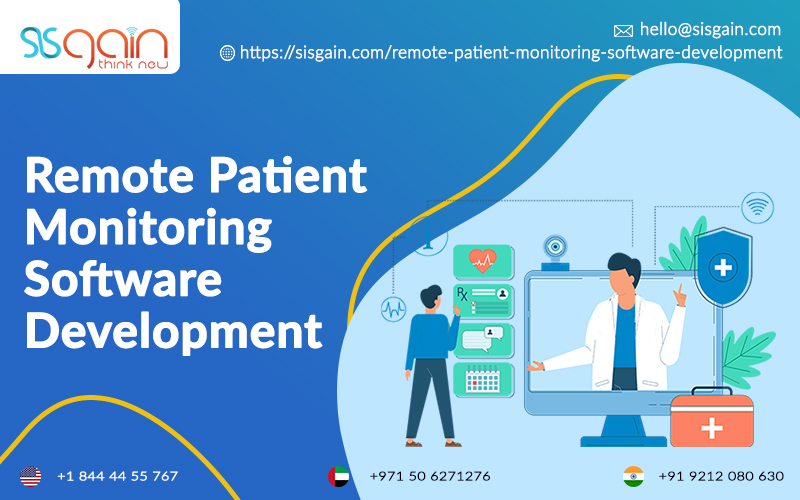
Reasons Why Remote Patient Monitoring Devices In Healthcare Is Getting More Popular In Jordan
Peterson Smith

The COVID-19 epidemic has wreaked havoc on healthcare systems all around the world. Due to the unprecedented nature of COVID-19, healthcare facilities are becoming overburdened, and hospitals can only physically handle a certain number of patients at any given moment.
RPM (Remote Patient Monitoring) is a method of telemedicine that involves treating patients from afar. Patients wear wearable gadgets that translate real-time outcomes into readings for healthcare professionals.
Patients and healthcare facilities alike benefit from remote patient monitoring programs in Jordan, which allows them to treat patients from afar. This kind of therapy is beneficial to both parties since they may be treated in the comfort of their own homes with fewer resources and at a lower cost.
What are remote patient monitoring devices?
Remote patient monitoring devices use digital technology to convey messages between doctors and patients. At different times during the day, patients monitor themselves to collect data about their health, then electronically communicate secure data via messages to their physicians or technicians.
The information is then analysed by medical experts in their primary care clinics, hospitals, critical care units, nursing homes, or off-site monitoring centres in order to provide daily—or even hourly—recommendations. This fast, real-time information sharing might be a lifeline for individuals with high-risk pregnancies, significant cardiac problems, or dementia.
How does remote patient monitoring devices work?
While RPM techniques differ based on the item or condition being monitored, most of the technology has the same components.
1- Sensor with wireless connectivity that can monitor and store specific physiological characteristics.
2- Additional wireless sensors, healthcare provider databases, and related apps to this storage.
3- Users generally have access to an interface that allows them to track or analyze data and see treatment suggestions.
4- RPM devices gather data, then transmitted it to the appropriate place and stored it in a relational database.
Types of remote patient monitoring devices
Let's look at some of the most often utilized devices to give remote patient management programs in Jordan now that you know why practices offer them. Device possibilities are more comprehensive than in the past, thanks to growing patient interest and an overhaul of RPM CPT codes that helped drive interest in RPM. These include devices that can assist satisfy both the short- and long-term demands of patients. Knowing which devices are available will assist you in determining which options best suit your practice's needs while also maximizing income possibilities.
Though there are other Remote patients monitoring devices in healthcare alternatives to learn about, we'll focus on four of the most popular.
1- Blood pressure monitor — Blood pressure monitors are beneficial in studies. To better control hypertension, doctors increasingly use blood pressure monitors, which are generally cuffs placed on patients' wrists. According to the American Heart Association, remote cardiac monitoring significantly lowers patient blood pressure compared to traditional treatment and self-monitoring alone.
2- Weight monitor — Remote weight monitoring, which is generally done with a scale, may be used for various purposes by practices. A rapid weight increase of even a few pounds in patients with congestive heart failure may signal that the disease is deteriorating, leading practitioners to take action, such as modifying existing medicines, ordering a diuretic, or scheduling an in-person or telemedicine appointment.
3- Blood glucose monitor — Diabetics must constantly monitor their blood glucose levels to ensure their safety. Diabetes patients, in particular, are among the most tech-savvy, and blood glucose monitoring is one of the most successful remote patient monitoring applications. Because patients with diabetes frequently do not notice symptoms until they have hyperglycemia or hypoglycemia, using a remote monitor can be the difference between life and death.
4- Spirometer — The spirometer is a well-known example, but expect to hear more about remote spirometry shortly. Spirometry often called pulmonary function testing, is a method of determining lung function. A spirometer, in particular, measures the volume (or amount) and flow (or speed) of air that a person can inhale or exhale.
Benefits of remote patient monitoring devices
1- The RPM reduces visits and hospitalizations, resulting in decreased healthcare costs. RPM can also cut long-term expenditures related to problems including assessments, testing, and treatments.
2- Remote patient monitoring devices in healthcare can substantially enhance a person's quality of life when used to treat chronic diseases.
3- RPM enables doctors to communicate with potential patients. This helps patients to communicate with the doctor about their health condition. Remote patient monitoring programs in Jordan will deliver a free consultation with a physician to their homes.
Visit: https://sisgain.com/ for more info.
Contact US:
Email-id : hello@sisgain.com
India : +91-9212-080-630
Dubai : +971506271276
Canada : +1-647-336-0444
USA: +1-844-44-55-767